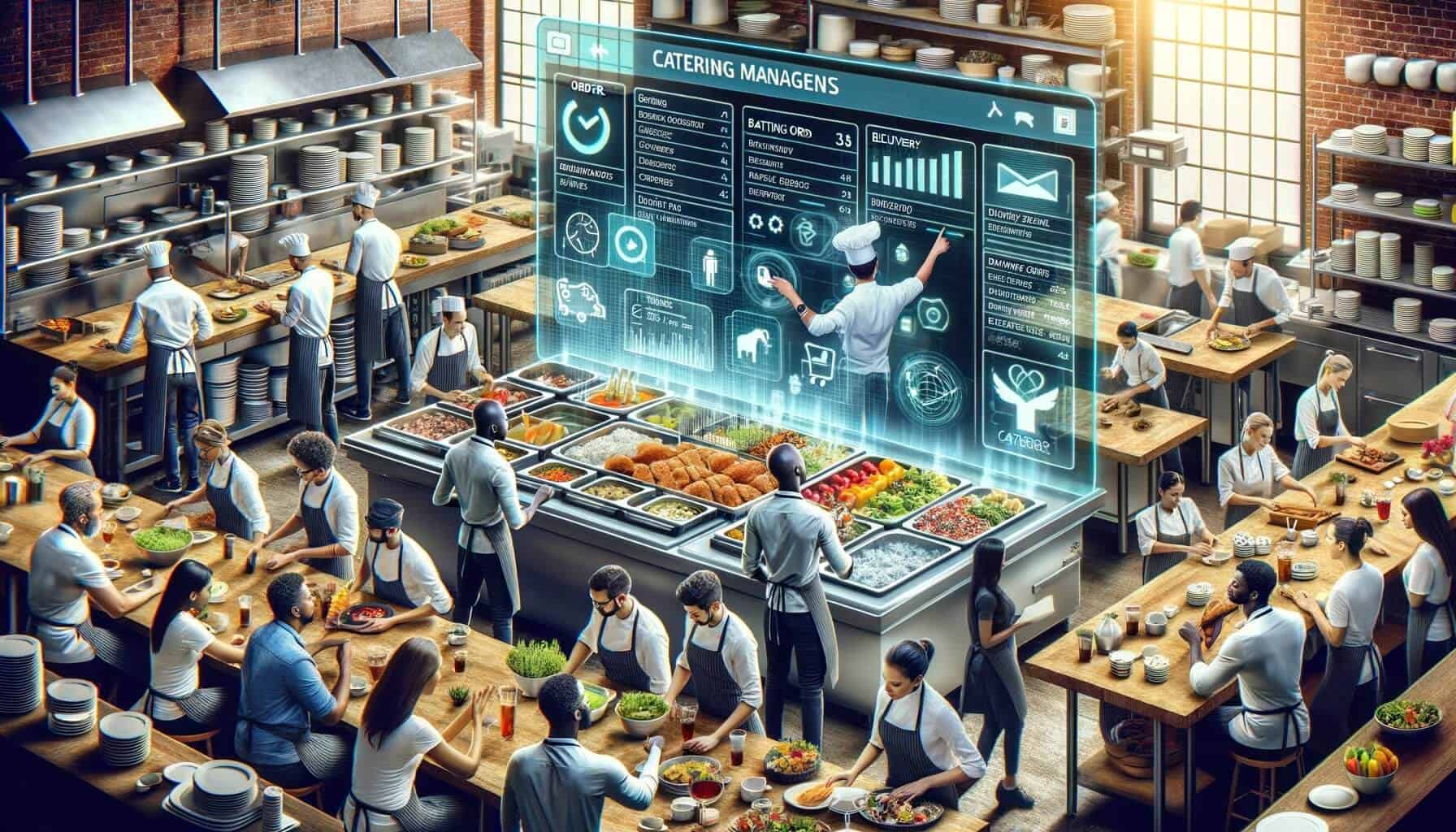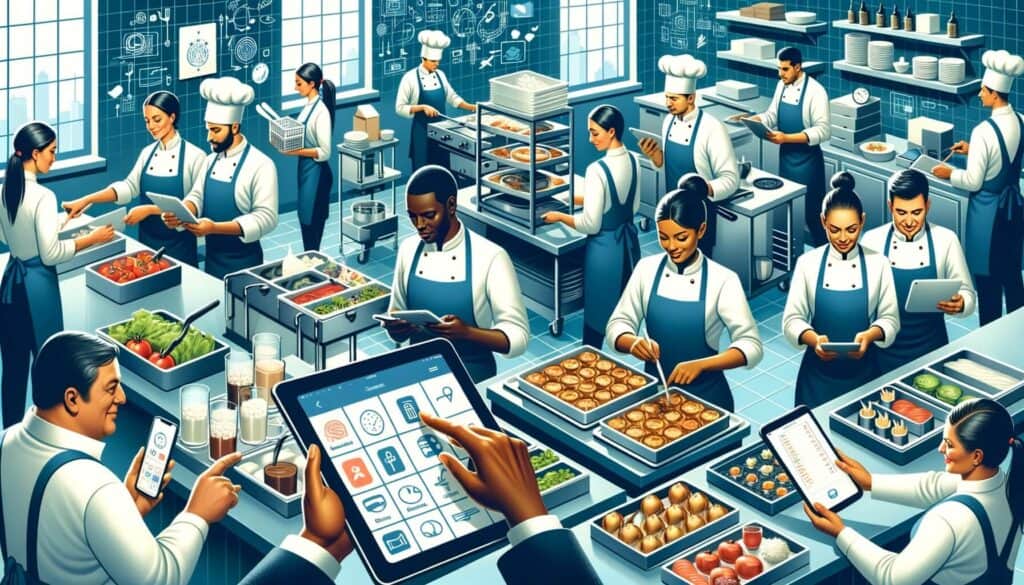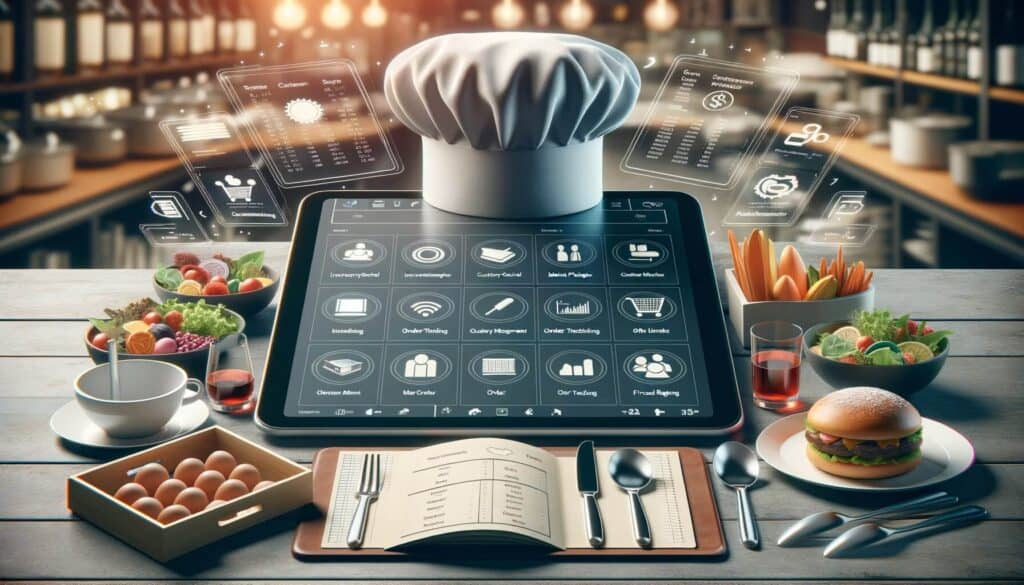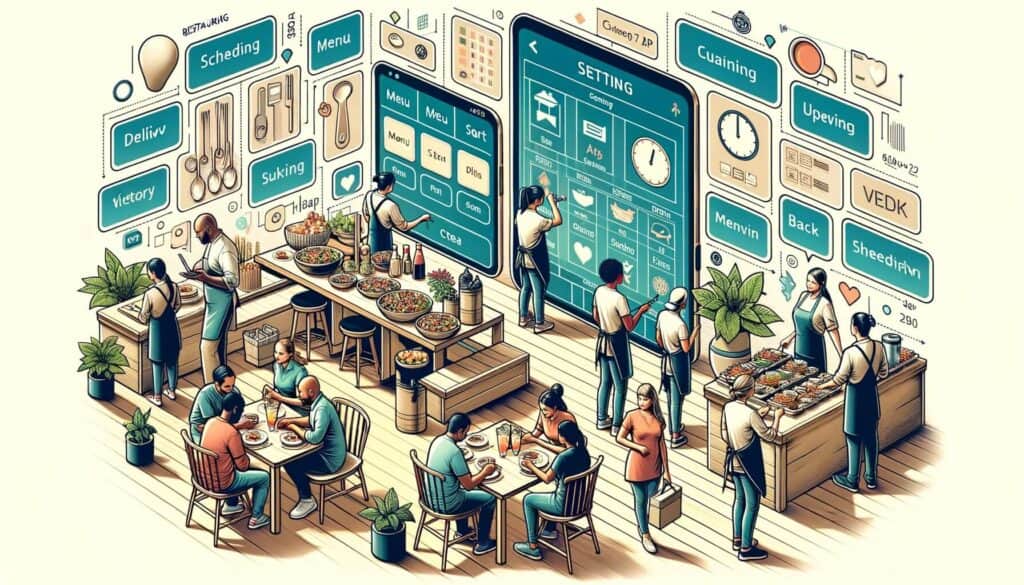
By Jermaine Thomas March 18, 2025
In today’s fast-paced and competitive restaurant industry, efficiency and productivity are key factors for success. One area where restaurants often struggle to streamline operations is catering. Catering operations require careful planning, coordination, and execution to ensure customer satisfaction and profitability. This is where restaurant management apps for catering operations come into play.
Restaurant management apps are powerful tools that can revolutionize the way catering operations are managed. These apps offer a wide range of features and functionalities that can help restaurant owners and managers streamline their catering processes, enhance efficiency, and boost productivity.
From menu planning and order management to inventory tracking and customer relationship management, these apps provide a comprehensive solution for all catering needs.
Benefits of Using Restaurant Management Apps for Catering Operations

The benefits of using restaurant management apps for catering operations are numerous and significant. Let’s explore some of the key advantages that these apps offer:
1. Streamlined Operations: Restaurant management apps automate and streamline various catering processes, such as menu planning, order management, and delivery logistics. This eliminates the need for manual paperwork and reduces the chances of errors and miscommunication.
2. Enhanced Efficiency: By automating repetitive tasks and providing real-time data and analytics, restaurant management apps enable catering teams to work more efficiently. This leads to faster order processing, improved customer service, and increased overall productivity.
3. Improved Communication: Effective communication is crucial in catering operations, where multiple teams and departments need to collaborate seamlessly. Restaurant management apps provide a centralized platform for communication, allowing teams to share information, updates, and feedback in real-time.
4. Better Inventory Management: Inventory management is a critical aspect of catering operations. Restaurant management apps offer features like real-time inventory tracking, automated stock alerts, and ingredient usage analysis. This helps in reducing wastage, optimizing stock levels, and ensuring timely procurement.
5. Enhanced Customer Relationship Management: Building strong customer relationships is essential for the success of any catering business. Restaurant management apps provide tools for managing customer data, preferences, and feedback. This enables personalized service, targeted marketing campaigns, and improved customer satisfaction.
6. Cost Savings: By streamlining operations, reducing errors, and optimizing inventory, restaurant management apps can lead to significant cost savings. These apps also help in identifying areas of inefficiency and wastage, allowing businesses to make informed decisions and cut unnecessary expenses.
7. Data-driven Insights: Restaurant management apps generate valuable data and analytics that can provide insights into customer preferences, popular menu items, and sales trends. This data can be used to make informed business decisions, develop marketing strategies, and drive growth.
Key Features to Look for in Restaurant Management Apps for Catering Operations

When choosing a restaurant management app for catering operations, it is important to consider the key features that will best meet your business needs. Here are some essential features to look for:
1. Menu Planning and Customization: The app should allow you to create and customize menus for different catering events. It should also provide options for dietary restrictions, allergens, and special requests.
2. Order Management: The app should have a user-friendly interface for managing catering orders, including order tracking, invoicing, and payment processing. It should also offer integration with online ordering platforms and POS systems.
3. Delivery Logistics: If your catering business offers delivery services, the app should have features for managing delivery routes, tracking drivers, and optimizing delivery schedules. It should also provide real-time updates to customers regarding the status of their orders.
4. Inventory Tracking: The app should offer real-time inventory tracking, including ingredient usage, stock levels, and expiry dates. It should also provide automated alerts for low stock items and integration with suppliers for seamless procurement.
5. Customer Relationship Management: The app should have a customer database for storing customer information, preferences, and feedback. It should also offer features for targeted marketing campaigns, loyalty programs, and customer feedback management.
6. Reporting and Analytics: The app should generate comprehensive reports and analytics on sales, revenue, customer feedback, and other key metrics. It should provide customizable dashboards and data visualization tools for easy analysis and decision-making.
7. Integration and Scalability: The app should be able to integrate with other systems and platforms, such as POS systems, online ordering platforms, and accounting software. It should also be scalable to accommodate the growth of your catering business.
How to Choose the Right Restaurant Management App for Your Catering Business

Choosing the right restaurant management app for your catering business can be a daunting task. With so many options available in the market, it is important to consider your specific business needs and goals. Here are some steps to help you choose the right app:
1. Identify Your Business Needs: Start by identifying the specific pain points and challenges in your catering operations. Determine the key features and functionalities that are essential for addressing these challenges and improving efficiency.
2. Research and Compare: Conduct thorough research on different restaurant management apps available in the market. Compare their features, pricing, customer reviews, and reputation. Look for apps that have a proven track record in the catering industry.
3. Seek Recommendations: Reach out to other catering business owners or industry professionals for recommendations. Ask about their experiences with different apps and get their insights on the pros and cons of each option.
4. Demo and Trial: Before making a final decision, request demos or free trials of the shortlisted apps. This will give you a hands-on experience of the app’s interface, features, and usability. Pay attention to the app’s user-friendliness and compatibility with your existing systems.
5. Consider Integration and Support: Check if the app can integrate with your existing POS system, online ordering platform, and other software. Also, consider the level of customer support provided by the app’s vendor. Ensure that they offer timely assistance and regular updates.
6. Cost and ROI: Evaluate the cost of the app and compare it with the potential return on investment. Consider the long-term benefits and cost savings that the app can bring to your catering business. Remember that investing in a quality app can lead to significant improvements in efficiency and profitability.
Setting Up and Getting Started with a Restaurant Management App for Catering Operations

Once you have chosen the right restaurant management app for your catering business, it is time to set it up and get started. Here is a step-by-step guide to help you through the process:
1. Plan and Prepare: Before implementing the app, create a detailed plan for the setup process. Identify the key stakeholders and assign responsibilities. Ensure that all necessary hardware and software requirements are met.
2. Data Migration: If you are transitioning from an existing system, ensure a smooth data migration process. Export and import customer data, menu items, pricing, and other relevant information into the new app. Double-check the accuracy of the migrated data.
3. Customization: Customize the app according to your business needs. Set up menus, pricing, and other configurations. Create user accounts and assign appropriate access levels to different team members.
4. Training and Onboarding: Provide comprehensive training to your catering team on how to use the app effectively. Conduct hands-on sessions, provide user manuals, and offer ongoing support. Encourage feedback and address any concerns or issues.
5. Integration and Testing: Integrate the app with your existing systems, such as POS and online ordering platforms. Test the integration to ensure smooth data flow and synchronization. Conduct thorough testing of all app features and functionalities.
6. Launch and Monitor: Once the setup is complete, launch the app for your catering operations. Monitor its performance closely and gather feedback from your team and customers. Make necessary adjustments and improvements based on the feedback received.
Streamlining Catering Operations with a Restaurant Management App: A Step-by-Step Guide
Now that you have set up your restaurant management app for catering operations, it’s time to streamline your processes and maximize efficiency. Here is a step-by-step guide to help you achieve this:
1. Menu Planning and Customization: Use the app’s menu planning features to create customized menus for different catering events. Consider dietary restrictions, allergens, and special requests. Ensure that the menus are visually appealing and easy to navigate.
2. Order Management: Utilize the app’s order management features to streamline the entire order process. Receive and process orders in real-time, generate invoices, and track payments. Set up automated notifications for order confirmations and updates.
3. Delivery Logistics: If your catering business offers delivery services, leverage the app’s delivery logistics features. Optimize delivery routes, assign drivers, and track their progress in real-time. Provide customers with accurate delivery time estimates and updates.
4. Inventory Tracking: Take advantage of the app’s inventory tracking capabilities to manage your stock effectively. Set up automated alerts for low stock items and expiry dates. Use the app’s analytics to identify usage patterns and optimize procurement.
5. Customer Relationship Management: Utilize the app’s customer relationship management features to build strong relationships with your catering clients. Store customer information, preferences, and feedback in the app’s database. Use this data to personalize service and offer targeted promotions.
6. Reporting and Analytics: Regularly generate reports and analyze the app’s analytics to gain insights into your catering operations. Monitor sales trends, customer feedback, and other key metrics. Use this data to make informed decisions and drive growth.
Enhancing Efficiency and Productivity in Catering Operations with a Restaurant Management App
Restaurant management apps have the potential to significantly enhance efficiency and productivity in catering operations. Here are some tips to maximize the benefits of using these apps:
1. Standardize Processes: Use the app to standardize your catering processes and workflows. Create templates for menus, order forms, and invoices. This will ensure consistency and reduce the chances of errors and miscommunication.
2. Automate Repetitive Tasks: Take advantage of the app’s automation features to eliminate manual and repetitive tasks. Set up automated notifications, reminders, and alerts for order confirmations, payment reminders, and stock replenishment.
3. Optimize Communication: Utilize the app’s communication features to streamline communication between different teams and departments. Encourage collaboration and real-time updates. This will reduce delays, improve coordination, and enhance overall efficiency.
4. Train and Empower Your Team: Provide comprehensive training to your catering team on how to use the app effectively. Encourage them to explore the app’s features and functionalities. Empower them to take ownership of their tasks and make informed decisions.
5. Regularly Update and Upgrade: Stay up-to-date with the latest app updates and upgrades. Take advantage of new features and functionalities that can further enhance efficiency and productivity. Provide feedback to the app’s vendor for continuous improvement.
Overcoming Challenges and Maximizing Success with a Restaurant Management App for Catering Operations
While restaurant management apps offer numerous benefits, there can be challenges in implementing and maximizing their success. Here are some common challenges and tips to overcome them:
1. Resistance to Change: Some team members may resist the adoption of a new app due to fear of change or lack of technical skills. Address this challenge by providing comprehensive training, ongoing support, and emphasizing the benefits of the app.
2. Integration Issues: Integrating the app with existing systems, such as POS and online ordering platforms, can be challenging. Ensure that the app’s vendor provides seamless integration support and conduct thorough testing before going live.
3. Data Security and Privacy: Protecting customer data and ensuring privacy is crucial. Choose an app that offers robust security features, such as data encryption and user access controls. Regularly update passwords and educate your team on data security best practices.
4. Technical Glitches and Downtime: Technical glitches and downtime can disrupt catering operations. Choose a reliable app with a proven track record of stability and performance. Have a backup plan in place in case of any unforeseen technical issues.
5. Lack of Customization: Some apps may not offer the level of customization required for your specific catering business. Choose an app that allows you to customize menus, pricing, and other configurations according to your unique needs.
Frequently Asked Questions (FAQs)
Q1. What is a restaurant management app for catering operations?
Answer: A restaurant management app for catering operations is a software application that helps restaurant owners and managers streamline their catering processes. These apps offer features such as menu planning, order management, inventory tracking, and customer relationship management.
Q2. How can a restaurant management app benefit catering operations?
Answer: A restaurant management app can benefit catering operations by streamlining processes, enhancing efficiency, improving communication, optimizing inventory management, and providing data-driven insights. These apps can also lead to cost savings and improved customer satisfaction.
Q3. What key features should I look for in a restaurant management app for catering operations?
Answer: Key features to look for in a restaurant management app for catering operations include menu planning and customization, order management, delivery logistics, inventory tracking, customer relationship management, reporting and analytics, and integration capabilities.
Q4. How do I choose the right restaurant management app for my catering business?
Answer: To choose the right restaurant management app for your catering business, identify your business needs, research and compare different apps, seek recommendations, request demos or free trials, consider integration and support, and evaluate the cost and potential return on investment.
Q5. How do I set up and get started with a restaurant management app for catering operations?
Answer: To set up and get started with a restaurant management app for catering operations, plan and prepare, migrate data if necessary, customize the app according to your business needs, provide comprehensive training to your team, integrate and test the app, and launch it for your catering operations.
Conclusion
Restaurant management apps have become indispensable tools for streamlining catering operations. These apps offer a wide range of features and functionalities that can enhance efficiency, productivity, and customer satisfaction.
By automating processes, improving communication, optimizing inventory, and providing data-driven insights, these apps can revolutionize the way catering businesses operate. However, choosing the right app and effectively implementing it can be challenging.
By following the steps and tips outlined in this article, catering businesses can overcome challenges and maximize the success of using restaurant management apps. Embracing technology and leveraging the power of these apps can lead to significant improvements in efficiency, profitability, and overall success in the catering industry.